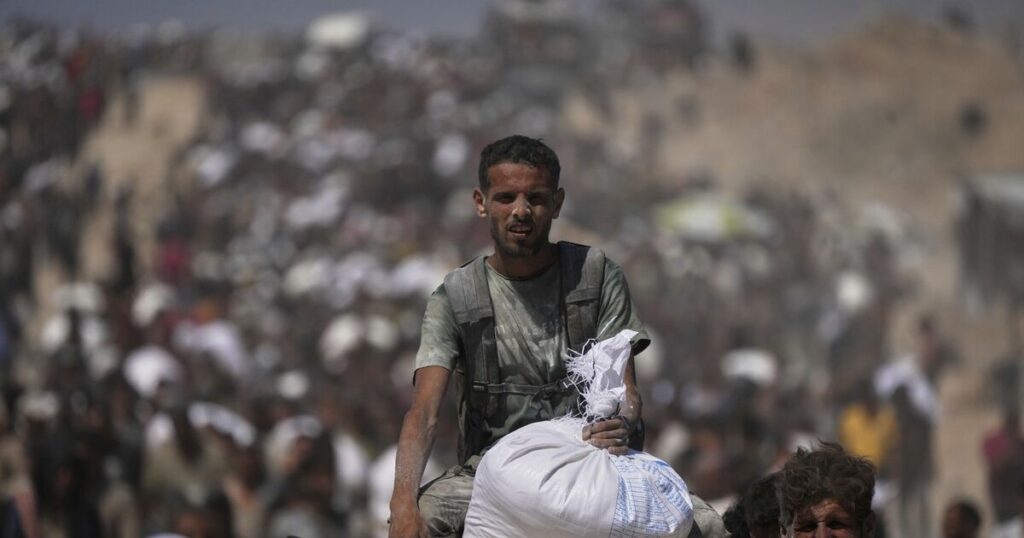Hospitals in Gaza reported the killing of at least 18 people, eight of them food-seekers, by Israeli fire on Saturday as Palestinians endured severe risks in their search for food amid airdrops and restrictions on overland aid delivery.
Near a Gaza Humanitarian Foundation (GHF) distribution site, Yahia Youssef, who had come to seek aid on Saturday morning, described a panicked scene now grimly familiar.
After helping carry out three people wounded by gunshots, he said he looked around and saw many others lying on the ground bleeding.
“It’s the same daily episode,” Mr Youssef said.
In response to questions about several witness accounts of violence at the northernmost of the Israeli-backed American contractor’s four sites, the GHF media office said “nothing (happened) at or near our sites”.
The episode came a day after US officials visited one site and the US Ambassador to Israel Mike Huckabee called GHF’s distribution “an incredible feat”.
International outrage has mounted as the group’s efforts to deliver aid to hunger-stricken Gaza have been marred by violence and controversy.
“We weren’t close to them (the troops) and there was no threat,” Abed Salah, a man in his 30s who was among the crowds close to the GHF site near Netzarim corridor, said. “I escaped death miraculously.”
The danger facing aid seekers in Gaza has compounded what international hunger experts this week called a “worst-case scenario of famine” in the besieged enclave.
Israel’s near 22-month military offensive against Hamas has shattered security in the territory of some 2.0 million Palestinians and made it nearly impossible to deliver food safely to starving people.
From May 27 to July 31, 859 people were killed in the vicinity of GHF sites, according to a United Nations report published on Thursday. Hundreds more have been killed along the routes of food convoys.
Israel and GHF have said they have only fired warning shots and that the toll has been exaggerated.
Health officials reported that Israeli airstrikes and gunfire killed at least 18 Palestinians on Saturday, including three whose bodies were transported from the vicinity of a distribution site to a central Gaza hospital along with 36 others who were wounded.
Officials said 10 of Saturday’s casualties were killed by strikes in central and southern Gaza.
Nasser Hospital said it received the bodies of five people killed in two separate strikes on tents sheltering displaced people.
The dead include two brothers and a relative, who were killed when a strike hit their tent close to a main thoroughfare in Khan Younis.
Meanwhile, in Tel Aviv, families of Israeli hostages protested and urged Israel’s government to push harder for the release of their loved ones, including those shown in footage released by militant groups earlier this week.
US President Donald Trump’s special envoy Steve Witkoff joined them a day after visiting Gaza and a week after walking away from ceasefire talks in Qatar, blaming Hamas’s intransigence and pledging to find other ways to free hostages and make Gaza safe.
Of the 251 hostages who were abducted when Hamas led an attack on southern Israel on October 7 2023, about 20 are believed to be alive in Gaza.
Hamas and Islamic Jihad, the second-largest militant group in Gaza, released separate videos of individual hostages this week, triggering outrage among hostage families and Israeli society.
The war in Gaza began when Hamas attacked southern Israel on October 7 2023, killing about 1,200 people, mostly civilians.
Israel’s retaliatory offensive has killed more than 60,000 Palestinians, according to Gaza’s health ministry, which does not distinguish between militants and civilians and operates under the Hamas government.
The UN and other international organisations see it as the most reliable source of data on casualties.


